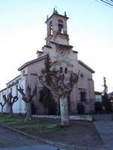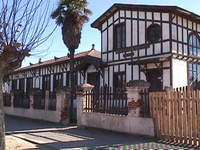Completando, ampliando, resumiendo, definiendo, repitiendo conceptos..
_____________________________________________________________
Henry Gray (1821–1865). Anatomy of the Human Body. 1918.
The brain, is contained within the cranium, and constitutes the upper, greatly expanded part of the central nervous system. In its early embryonic condition it consists of three hollow vesicles, termed the hind-brain or rhombencephalon, the mid-brain or mesencephalon, and the fore-brain or prosencephalon; and the parts derived from each of these can be recognized in the adult (Fig. 677).
Thus in the process of development the wall of the hind-brain undergoes modification to form the medulla oblongata, the pons, and cerebellum, while its cavity is expanded to form the fourth ventricle.
The mid-brain forms only a small part of the adult brain; its cavity becomes the cerebral aqueduct (aqueduct of Sylvius), which serves as a tubular communication between the third and fourth ventricles; while its walls are thickened to form the corpora quadrigemina and cerebral peduncles.
The fore-brain undergoes great modification: its anterior part or telencephalon expands laterally in the form of two hollow vesicles, the cavities of which become the lateral ventricles, while the surrounding walls form the cerebral hemispheres and their commissures; the cavity of the posterior part or diencephalon forms the greater part of the third ventricle, and from its walls are developed most of the structures which bound that cavity.

Scheme showing the connections of the several parts of the brain. (After Schwalbe.)

Schematic representation of the chief ganglionic categories (I to V). (Spitzka.)
The hind-brain or rhombencephalon occupies the posterior fossa of the cranial cavity and lies below a fold of dura mater, the tentorium cerebelli.
It consists of
(a) the myelencephalon, comprising the medulla oblongata and the lower part of the fourth ventricle;
(b) the metencephalon, consisting of the pons, cerebellum, and the intermediate part of the fourth ventricle; and
© the isthmus rhombencephali, a constricted portion immediately adjoining the mid-brain and including the superior peduncles of the cerebellum, the anterior medullary velum, and the upper part of the fourth ventricle.
The medulla oblongata extends from the lower margin of the pons to a plane passing transversely below the pyramidal decussation and above the first pair of cervical nerves.

Medulla oblongata and pons. Anterior surface.

Decussation of pyramids.
Scheme showing passage of various fasciculi from medulla spinalis to medulla oblongata.
a. Pons.
b. Medulla oblongata.
c. Decussation of the pyramids.
d. Section of cervical part of medulla spinalis.
1. Anterior cerebrospinal fasciculus (in red).
2. Lateral cerebrospinal fasciculus (in red).
3. Sensory tract (fasciculi gracilis et cuneatus) (in blue). 3’. Gracile and cuneate nuclei.
4. Antero-lateral proper fasciculus (in dotted line).
5. Pyramid.
6. Lemniscus.
7. Medial longitudinal fasciculus.
8. Ventral spinocerebellar fasciculus (in blue).
9. Dorsal spinocerebellar fasciculus (in yellow). (Testut.)

Hind- and mid-brains; postero-lateral view.
FIG. 682

Superficial dissection of brain-stem. Lateral view.

Dissection of brain-stem. Lateral view.

Deep dissection of brain-stem. Lateral view.

Deep dissection of brain-stem. Lateral view.

Upper part of medulla spinalis and hind- and mid-brains; posterior aspect, exposed in situ.
______________________________________________________________






















































































































































